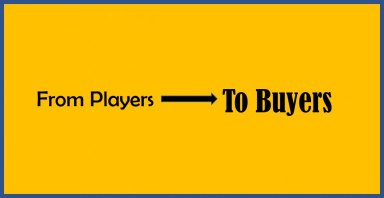
Last version published: 25/04/2017 17:29
Publication number: ELQ-79106-3
View all versions & Certificate

How to Convert Players to Payers in Five Steps
Build a five step journey that guides your players through each step.
Introduction
Remember the first time you played Farmville? What motivated you to do it? Were you looking for more ways to spend money online? Or was it boredom? Maybe the game was recommended to you? Or the advertisement was attractive? Unless you’re richer than Mark Zuckerburg, I’d say it was rather one of the latter reasons. Players are no different: no one will play a game because they can’t wait to buy more virtual products, though some do spend the money. This tool is made to guide you in converting your players into payers.
Keep in mind, your games isn't just a game, it is a marketing and sales procedure. When a new user uses your game, he isn’t just a player, he is an opportunity to sell. Your job is to construct an experience, where over a period, converts the given opportunities into sales.
Let’s begin by thinking about the end of the sales funnel. Why should anyone get enthusiastic enough to get their credit cards out for your game, because I am certain virtual goods don’t fit into the bottom two levels of Maslows Hierarchy. Try to think about the path it takes between a new, uncertain player and one who is motivated enough to spend their money.
I will give you a sample journey on how to do this. Its only 5 steps, and can be applied only to games where the users are motivated by competition. Not in the sense of aggressive, athlete, rap star, alpha male kind of competition- the alpha male games are not prototypical casual gamers- instead the kind of competition that arose the phase “keeping up with the Joneses”. These sort of users are those who begin to feel that their friend’s farm is suddenly better looking than their own, though they don’t have time to catch up, and need alternate ways to not be left behind.
In the online methodology below, you can find the five steps to converting users to buyers. You may also download the PDF file (with the same content).
Use the steps to design features and mechanics particular to your game that fulfils each step. Build a whole journey that guides your players through each step.
Remember that there are alternate reasons to why players might end up paying for virtual goods. In these occasions, motivations, how much they spend, will vary greatly by age and player type.
- Step n°1 |
Acclimatisation: learn the rules, begin to enjoy the game.
We’re designing for the player who is about to leave and their mouse hovering over the browser back button. We’ve got to get them interested quickly, and we’ve got to make sure the player feels like they’re going to be good at the game so that they know its going to be worth spending their time. To achieve this, we design for what we call a false sense of achievement. Everyone wants to feel like a winner, after the first 10 minutes playing Frontierville, Zynga leave you feeling like the best Frontierville ever! The players reward is a function of the time they spend playing, not their skill level. - Step n°2 |
Socialisation: invite friends and make new friends.
If our players are going to spend money because they want to “keep up with the Joneses”, then we need to make sure they’ve got someone to keep up with! Yet, if its a bad game there’s nothing that you can do to convince players to tell their friends, but just because its a good game doesn’t mean they’ll tell their friends either. You have to design viral in from the very start – you can’t bolt wings onto car and expect it to fly, and likewise, you can’t bolt viral growth onto a game and expect it to grow
add_shopping_cartContinue reading for free (70% left)

